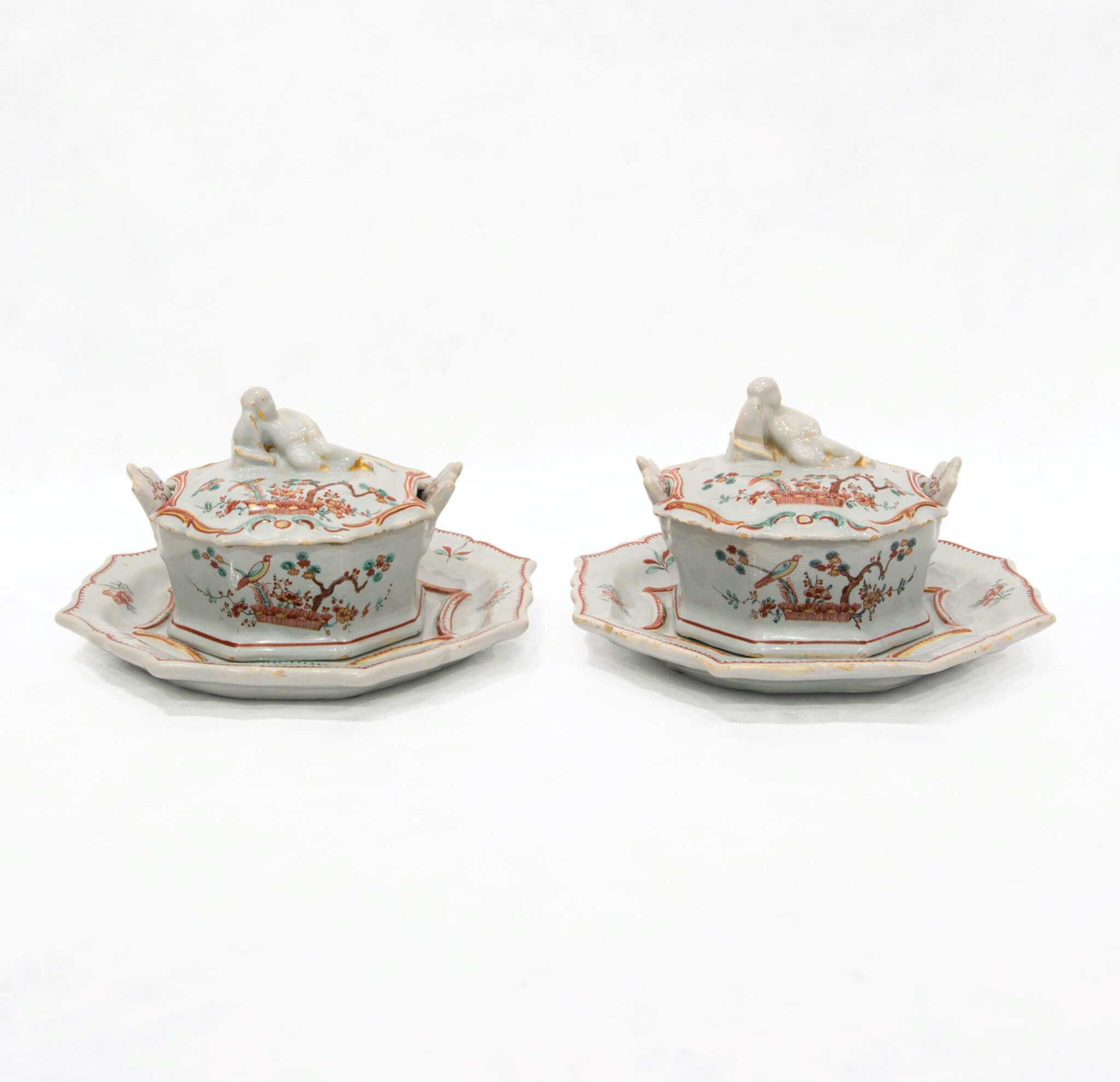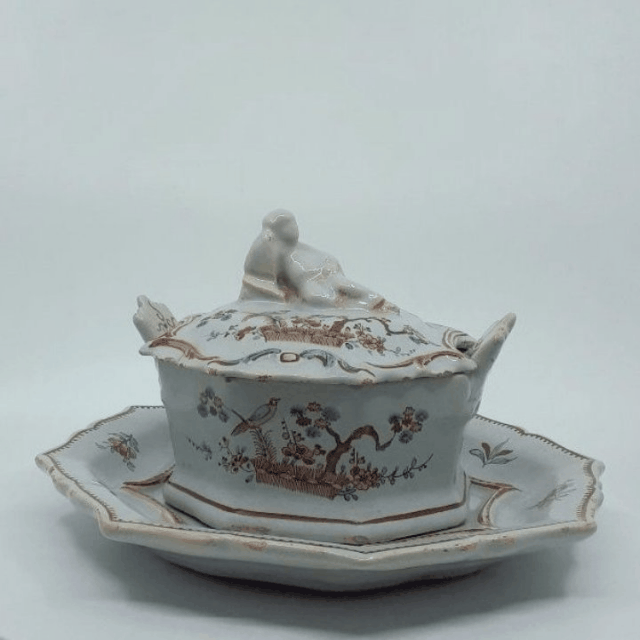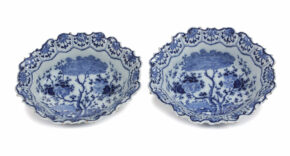
[popup_trigger id=”13756″ tag=”span”]![]() [/popup_trigger]
[/popup_trigger]
Images on this website are licensed under a
Creative Commons Attribution-NoDerivs 3.0 Unported License.

OBJECT
D2136. Pair of Polychrome Petit Feu and Gilded Butter Tubs, Covers and Stands
Delft, circa 1760
Each butter tub of octagonal form and painted in the Kakiemon palette on the front and reverse with birds perched on branches, repeated on the cover within a border of scrolls and the finial shaped as a reclining fi gure, the stands with the same decoration of birds perched on branches within a scrollwork border encircled with floral sprigs.
Dimensions
Width of stands: 18.7 cm. (7.4 in.)
Provenance
Aronson Antiquairs, Amsterdam;
American Private Collection
Note
In the seventeenth century it became increasingly difficult for the Dutch East India Company (VOC) to import porcelain due to civil unrests in China and the Company decided to relocate this trade to Japan. Initially, the Dutch ordered copies of Chinese porcelain, but soon Japanese products arrived on the market and various ceramic decors were exchanged with the Delft factories.
From 1660 the VOC increasingly imported multi-colored porcelain, including Kakiemon. This Japanese porcelain was very exclusive and therefore became a beloved subject for the Delft potters. Objects were produced in a Kakiemon palette often with a typical oriental decoration, as can be seen on this pair of butter tubs. This decoration consists of tied grain sheaves, behind which grow bamboo, pine trees and prunus blossom. A bird is perched on the branches, and sometimes quails or even tigers were painted on the ground. The Delft potters recreated this Kakiemon decoration, but adapted it to their own Western taste. Japanese Kakiemon porcelain is rarely accurately imitated in Delft. Usually the Delft Kakiemon decorations were expanded and painted as full patterns on European forms instead of painting the object only to a limited extent as is common with Japanese Kakiemon. Since the price of a Delftware object was largely determined by the time spent on the paintwork, it makes sense that the Delft painters almost completely decorated their objects. The finer, but especially the fuller a piece was decorated, the more expensive it was.








